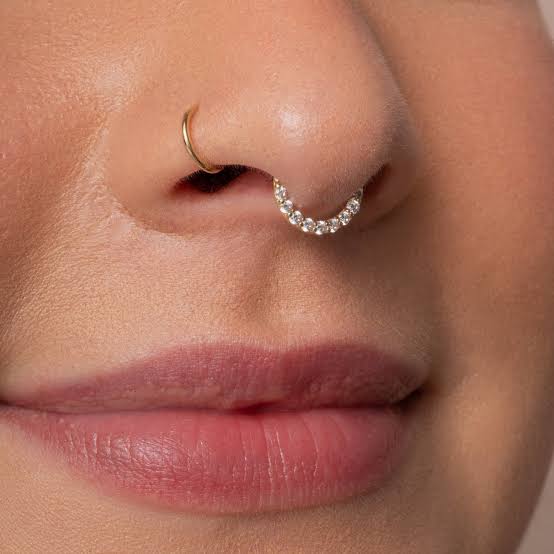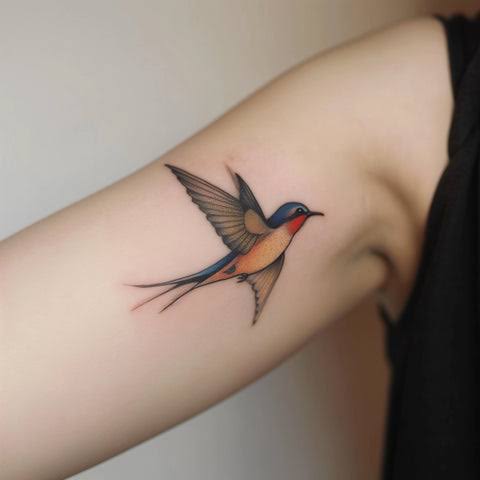Septum Piercing: Everything You Need to Know About it

Everything you need to know about septum piercing. Septum piercings have become a huge trend in recent years.
This bold and stylish piercing is loved for its versatility and unique look.
If you’re considering getting one or just curious about it, there are many things you need to know about septum piercing. From how it’s done to aftercare tips, we’ve got you covered.
What is a Septum Piercing?
A septum piercing goes through the thin piece of skin between your nostrils. It’s not the cartilage but the softer part of your nose.
This piercing is often admired because it can be both subtle and edgy depending on how you wear the jewelry.
Some people choose rings or horseshoe-shaped jewelry, while others opt for more extravagant designs. The style options are endless, which is part of the appeal.
How is a Septum Piercing Done?
The septum piercing process is quick but precise. First, your piercer will clean the area and make sure everything is sterile.
Then, they will use a clamp to hold your septum in place before inserting a hollow needle. Once the needle goes through, the jewelry is inserted.
Although it might sound painful, many people describe the pain as more of a pinch. However, pain tolerance varies from person to person.
After getting a septum piercing, it’s common to feel a bit of tenderness and swelling. This is part of the healing process, but with proper care, the discomfort should fade in a few days.

Healing and Aftercare Tips
Once you get a septum piercing, aftercare is crucial. Proper care helps prevent infections and speeds up the healing process.
Septum piercings typically take 6 to 8 weeks to heal, but it can sometimes take longer depending on how well you care for it. Here are some important tips:
- Clean the piercing regularly: Use a saline solution or a gentle piercing cleanser to clean the area at least twice a day. Make sure your hands are clean before touching your nose.
- Avoid touching or twisting the jewelry: Touching your piercing too often or moving the jewelry can cause irritation and slow the healing process.
- Be mindful of what you wear: Avoid tight or heavy glasses that can rub against your piercing while it heals. Also, be careful with scarves or anything that could pull at the jewelry.
Following these steps will help keep your septum piercing healthy and reduce the risk of infection. Septum piercing aftercare is key to a smooth healing process.
Does a Septum Piercing Hurt?
Pain is one of the most common concerns about septum piercings. While everyone’s pain tolerance is different, most people find the actual piercing to be more uncomfortable than painful.
It feels like a sharp pinch followed by pressure. The good news is that the discomfort is quick, and the healing process isn’t too bad as long as you take proper care of it.
You might feel some soreness for the first week, but this usually subsides. If the pain persists or gets worse, it could be a sign of infection, and you should consult a professional.
Choosing Jewelry for Your Septum Piercing
One of the best parts about getting a septum piercing is choosing the jewelry. There are so many styles available that you can switch up your look whenever you like.
However, you should wait until your piercing is fully healed before changing your jewelry. For the initial piercing, most piercers will recommend using a horseshoe or circular barbell.
This is because these styles are easier to flip up into your nose, making the piercing less noticeable if needed.
Once your septum piercing is healed, the possibilities are endless. You can try everything from gold hoops to ornate designs, depending on your style.
Pros and Cons of Septum Piercing
Like any piercing, septum piercings have their pros and cons. Before making the decision to get one, it’s essential to weigh them out.
**Pros:**
- Versatility: You can flip the jewelry inside your nose, making it nearly invisible when necessary.
- Unique look: Septum piercings are stylish and bold, helping you stand out.
- Variety of jewelry: The range of jewelry options allows for creative expression.
Cons:
- Healing time: Septum piercings can take a while to heal, and during this time, you’ll need to be careful.
- Risk of infection: Like any piercing, if not properly cared for, it can become infected.
- Pain during healing: While the initial piercing doesn’t hurt too much, the healing process can be uncomfortable.
Septum Piercing and Aftercare
After getting your septum pierced, aftercare becomes your top priority. Clean it with a saline solution daily, avoid touching the jewelry, and stay away from harsh skincare products that might irritate the area.
If you follow these steps, your piercing will heal smoothly without complications.
Some Frequently Asked Questions
Can I hide my septum piercing for work or school?
Yes, one of the benefits of septum piercings is that they can be easily hidden by flipping the jewelry inside your nose.
How long before I can change the jewelry?
It’s best to wait until your piercing is fully healed, which can take up to three months. Changing the jewelry too soon can cause irritation.
What should I do if my piercing gets infected?
If you notice signs of infection, such as redness, swelling, or discharge, consult your piercer or a healthcare professional immediately.
Can I get a septum piercing if I have allergies?
If you suffer from allergies and frequently blow your nose, you may want to wait until allergy season is over before getting a septum piercing. Constant irritation can slow the healing process.


